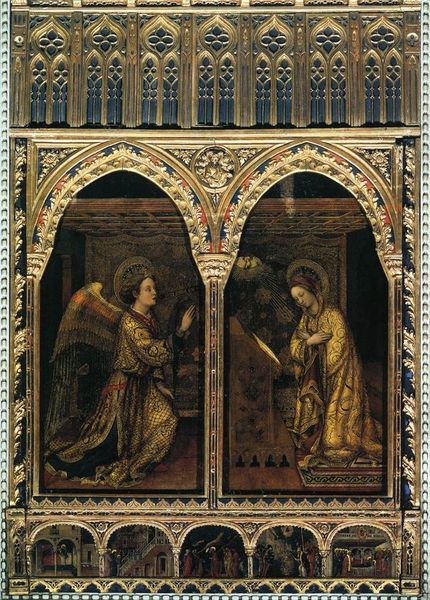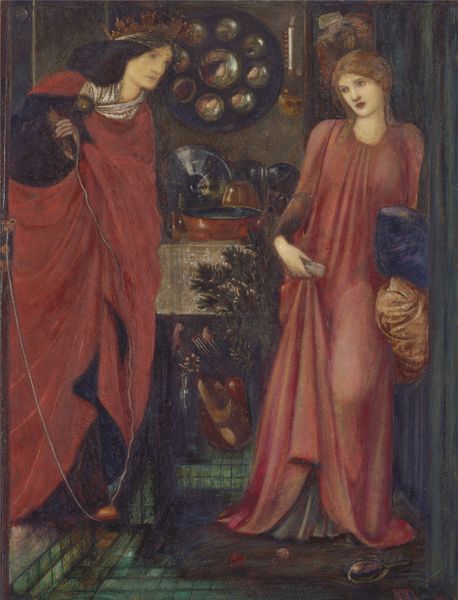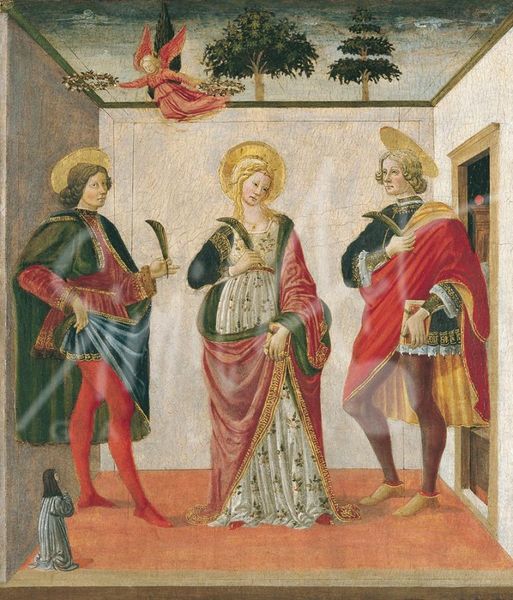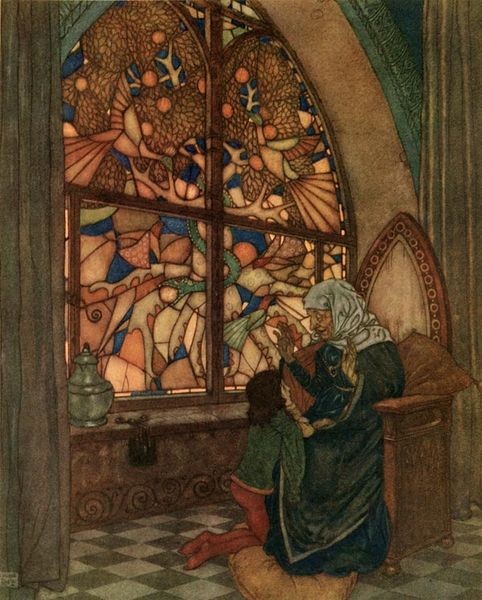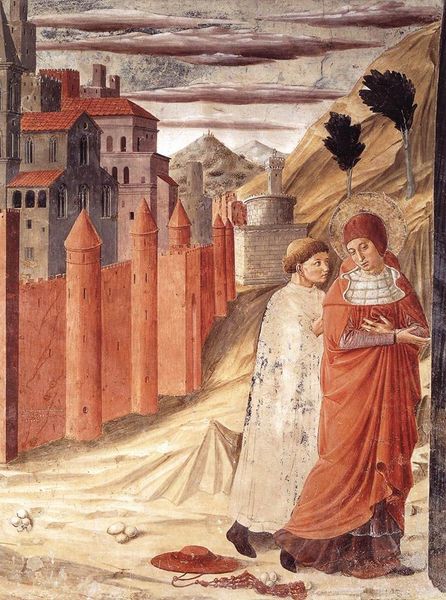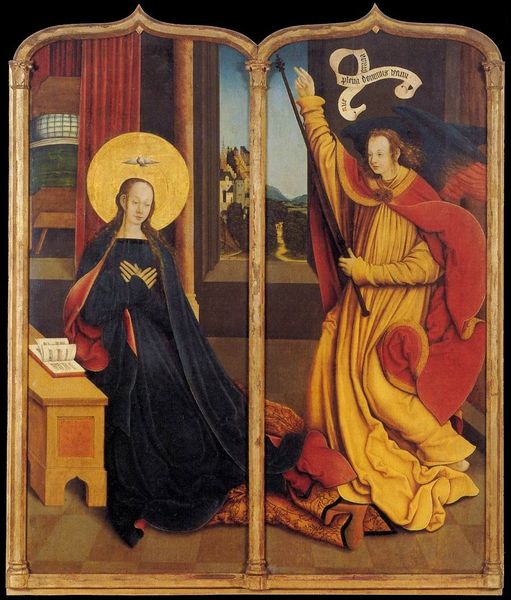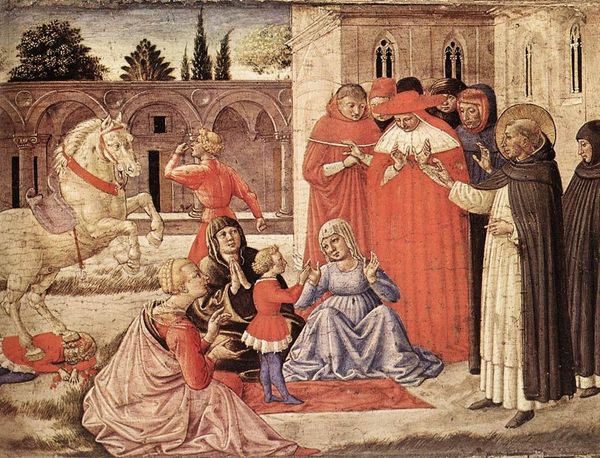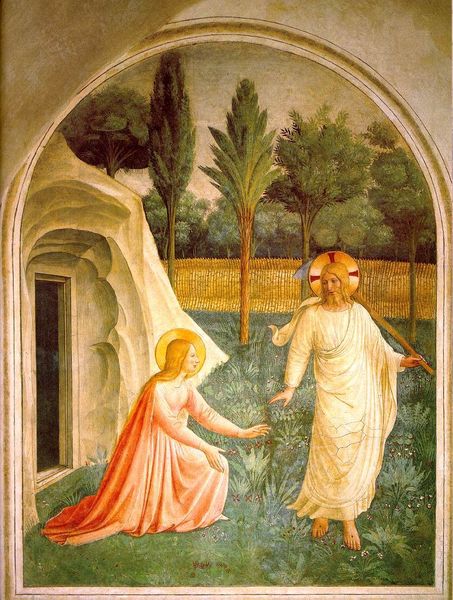
Dimensions: 64.14 x 50.8 cm
Copyright: Public domain
Curator: Here we have Edward Burne-Jones's "Merlin and Nimue" from 1861, a tempera on panel piece, currently residing at the V&A. Editor: What strikes me is the subdued palette and almost dreamlike quality. The figures seem caught between worlds. How do you interpret this work within its historical context? Curator: This painting is heavily influenced by the Pre-Raphaelite Brotherhood's ideals, specifically their fascination with Arthurian legends. Burne-Jones, a key figure, uses this narrative to explore themes of power, seduction, and the dangerous allure of knowledge. The mid-19th century saw a rise in interest in these medieval stories, serving as a cultural retreat from the rapidly industrializing world. What does the positioning of Merlin, below Nimue, say to you? Editor: It seems he's diminished, powerless. Was this portrayal of female agency common for the time, or was it pushing boundaries? Curator: It’s complex. On one hand, the "femme fatale" trope, the woman who leads a man to his ruin, was prevalent. But here, Nimue isn’t overtly sexualized; she possesses knowledge, and that is her power. The painting enters a dialogue within a patriarchal Victorian society grappling with evolving concepts of gender and power. Consider the political and social pressures of the period. Do you think this piece celebrates or warns against female power? Editor: It feels ambiguous, perhaps intentionally so, reflecting the anxieties and fascinations of the era. It's like a stage for social and political debates on gender roles. Curator: Precisely! And the public role of art was to explore and, at times, cautiously challenge these norms. The fact that this piece is in the V&A, a museum intended to elevate public taste and morality, also says a great deal. What are your overall thoughts now? Editor: I initially saw it as a purely aesthetic work. Now I see it as a fascinating reflection of Victorian anxieties about women and power, cleverly veiled in Arthurian lore. Curator: Absolutely. By looking at art through a historical lens, we start seeing how deeply entwined artwork is with social structures.
Comments
No comments
Be the first to comment and join the conversation on the ultimate creative platform.

